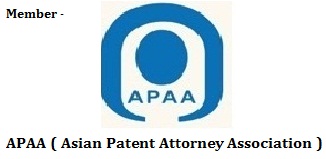Sip of Justice in a Battle of Premium Whiskeys: Analysing the scope of Deceptive Similarity

INTRODUCTION
When a person gets his trademark registered, he acquires valuable rights to the use of the trademark in connection with the goods in respect of which it is registered. And, in the event of any invasion of his rights by any other person using a mark which is identical or deceptively similar to his trademark, he could protect his mark by an action for infringement and obtain an injunction. Thus, the basis for protecting the trademark is that no mark shall be registered which is likely to deceive the public or which creates confusion in the minds of the public in regard to the ‘origin’ or source of goods or services. When two businesses compete with trademarks that sound similar to the consumers, trademark and brand identity challenges frequently arise.
For determining deceptive similarity there is a requirement to examine ‘whether the essential features of the plaintiff’s trade mark are to be found in that used by the defendant’. There is no hard and fast rule to laid down a universal test to determine the similarity between two marks. When the class of buyers is quite educated and rich, the test to be applied is different from the one where the product would be purchased by villagers, illiterate and poor. Such is the case of Pernod Ricard India Private Limited & Anr. v. Karanveer Singh Chhabra, where two premium whiskey brands ‘Blenders Pride’ and ‘London Pride’ engaged in a trademark battle which highlights the complexities of trademark law. In this article, we critically analyse the dispute and the findings of the courts seeking clarity on the interpretation of deceptive similarity.
BACKGROUND OF THE CASE
The Plaintiff was inter alia engaged in marketing, manufacturing and distribution of wines, liquors and spirits. The Plaintiff accused the Defendant of trademark infringement on the use of the mark ‘London Pride’ for whisky, alleging that it infringed upon their well-known brands, ‘Blenders Pride’ and ‘Imperial Blue’. Since their registrations in 1995 and 1997, respectively, the Plaintiff’s trademarks ‘Blenders Pride’ and ‘Imperial Blue’, which were duly registered under Class 33, have been associated with whiskey products. Furthermore, the Plaintiff also holds the registered trademark for ‘Seagram’, which serves as the domestic and international house mark in India.
The Plaintiff contended that the Defendant’s mark ‘London Pride’ closely resembled ‘Blenders Pride’ and labelling, packaging and trade dress of London Pride with the mark ‘Imperial Blue’. The Plaintiff emphasized that the term ‘Pride’ within their mark ‘Blenders pride’ and the labelling, packaging and trade dress of ‘Imperial Blue’ played a very significant role in their trademarks. The Plaintiff further claimed that the Defendant deliberately aims to deceive and defraud the public or members of trade by adopting the mark ‘London Pride’ along with packaging reminiscent of ‘Imperial Blue’.
TRIAL COURT FINDINGS
The trial court, citing the case of Carew Phipson Limited v. Deejay Distilleries (P) Limited, dismissed the injunction application of the Plaintiff and held that consumers usually identify and purchase the specific product by their full names or the first word, and not with generic words like in this case ‘Pride’ alone. Also, the court emphasized that the Plaintiff lacked registration for colours or design to claim infringement of Imperial Blue Seagram’s mark. The court also noted that the only similarity between both the marks was the word ‘Pride’ but failed to compare similarity in packaging and other visual representations of marks.
HIGH COURT’S ORDER
The Madhya Pradesh High Court (Indore Bench) upheld the decision of the trial court and by citing the case of Khoday Distilleries Limited v. The Scotch Whisky Association, the Hon’ble court acknowledged the application of the ‘test of deceptive similarity’ and emphasized the necessity to understand potential consumers. The court also analysed that the consumers of whiskey belong to the ‘premium’ and ‘ultra-premium’ categories. These individuals are usually literate and possess reasonable intelligence, which enables them to differentiate between the brands, even with imperfect recollection.
The court further stated that using the generic word ‘Pride’ by the Defendant is insufficient to deceive consumers or members of the trade. The court further noted that the trademarks of both the parties are renowned and purchased by their full names or first words by the consumers. The court also rejected the argument regarding Imperial Blue Seagram’s Mark, citing that the Plaintiff failed to register combinations of colours or bottle shapes under the Trade Marks Act, 1999. The court further found dissimilarities between the whiskey bottles, including letter arrangement, colour patterns, and shapes, stating that there was no visual, phonetic, or structural similarity between them.
PROCEEDINGS BEFORE THE SUPREME COURT
The Plaintiff, being dissatisfied with the High Court’s decision, filed an appeal by way of a Special Leave Petition before the Hon’ble Supreme Court. The Supreme Court examined the labelling, and packaging of liquor bottles presented by the appellant during proceedings. The court noted that the consumers while purchasing the whiskey ask for the brand with their first term rather than the term ‘Pride’. It is important to emphasize that the prices of both brands are significantly different for the purchasers. Furthermore, the court issued notice to the Defendant inquiring about the reason behind their adoption of the term ‘Pride’ and whether they would modify the combination and trade dress regarding the product’s visual appearance. As of now, the case is still listed and the final judgement remains pending
CONCLUSION
In conclusion, the case plays a significant role not only for the parties but also for similar cases for future reference. It underpins the principle of fairness, equity and consumer protection while guiding to resolution of complex trademark disputes. The judgments of courts provide clarity on the interpretation and application of deceptive similarity within trademark disputes. The courts set out a precedent by emphasizing the necessity to understand potential consumers or members of the trade, and highlighting the consumers’ education and awareness. It provides a balance between protecting the trademark owners’ rights and ensuring fair competition in the marketplace.
The present article is written by our Associates, Ms. Neha Singh and Mr. Siddharth Soni. The views and opinions expressed in this article are those of the authors and do not necessarily reflect the official policy or position of any agency of the Indian government. Examples of analysis performed within this article are only examples. They should not be utilized in real-world analytic products as they are based only on very limited and dated open source information. Assumptions made within the analysis are not reflective of the position of any Indian government State.


